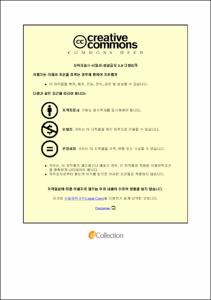Synthesis and characterizations of high refractive index oxide materials for the enhancement of LED light extraction efficiency
- Abstract
- Light-emitting diodes (LEDs) with high-power and high-efficiency are very important for diverse applications. In particular, their inherent characteristics such as small device capability and high radiance, reliable long life-time, short response time, and low energy consumption offer significant advantages over existing illuminating devices. Nevertheless, light generation in devices showed low external quantum efficiency because of a narrow escape cone due to large difference in the refractive index between air and semiconductor materials. Therefore, in order to fabricate a high-efficiency LEDs, light extraction efficiency (LEE) needs to be improved effectively.
In this study, different morphologies and refractive indices of ZrO2, TiO2 and ZnO materials were synthesized by a facile solvothermal reaction method and were used to enhance the LEE. The LEE simulation was carried out by LightTools ray tracing method based on the Monte Carlo method and the Snell’s law.
In the case of ZrO2 spheres, the influence of concentration of precursor on the size and size distribution of ZrO2 spheres was explored. When the concentration of zirconium propoxide increased from 0.031 to 0.045 mol, the size of each sphere increased from 305 to 920 nm. Diffused reflectance measurement showed that the reflectivity of the ZrO2 spheres annealed at 500 ºC was higher than those of as-prepared ZrO2 and commercial yttrium stabilized zirconia (YSZ) powder. The LEE was improved by 70.12% when ZrO2 spheres were coated directly on the GaN surface compared to LED without ZrO2 spheres, and improved by 23% when ZrO2 spheres were coated on the ITO surface through the effect of ZrO2 spheres due to the increased effective photon escape cone and spherical morphology.
The mesoporous TiO2 hollow spheres were synthesized without any surfactant and template to examine their LEE. The reaction conditions such as reaction temperature, type of precursor, solvent used and their influence on the synthesis of TiO2 hollow spheres are investigated. The TiO2 spheres have obtained different diameters ranging from 700 nm to 1.79 μm at different reaction temperatures. The shell is composed of numerous single crystalline nanoparticles. The morphology and interiors of the spheres strongly depended upon the experimental parameters such as reaction temperature and a kind of solvent. Especially, interiors of TiO2 hollow spheres such as mesoporous, double shell and single wall structures at various reaction temperatures are discussed with the aid of TEM, FIB and SEM measurements. The total flux of LED was reduced when the TiO2 solid/hollow spheres were coated on the ITO top surface. However, the observed results suggested that when compared with lambertian emission patterns, the ITO top surface coated with the solid spheres produces the spread emission pattern, and the ITO top surface coated with the hollow spheres provides the spot emission pattern.
Finally, the ZnO nanoparticles (NPs) with rod, bullet and broom-like morphologies were synthesized to establish their LEE. Structural analysis revealed that the ZnO NPs to be of the single crystal wrutzite hexagonal structure. The size and morphology of ZnO NPs were controlled by varying the polarity of solvents. The aspect ratio of ZnO NPs at the lower polarity was below 2, and their shape was like a bullet. When increasing the polarity of solvent, the aspect ratio also increases and the shape changes to rod-like morphology. This process is very simple and scalable. In addition, it can be used for fundamental studies of the tunable morphology formation. The enhancement of LEE of GaN LED by using ZnO rods was demonstrated. The LEE was improved by 2.23 times when ZnO hexagonal rods were coated directly on the ITO top surface due to the increased effective photon escape cone.
- Issued Date
- 2015
- Awarded Date
- 2015. 8
- Type
- Dissertation
- Publisher
- 부경대학교 대학원
- Affiliation
- 부경대학교 물리학과
- Department
- 대학원 물리학과
- Advisor
- 문병기
- Table Of Contents
- Abstract ix
1. Introduction 1
1.1 Historical evolution of LED technology 3
1.2 Research purpose 5
2. Theoretical background 8
2.1 Basic of LED 8
2.2 LED efficiency 8
2.3 The principle of the light extraction 11
2.4 Light escape 13
2.5 Present research on high extraction efficiency structures 18
2.5.1 Shaping of LED dies 18
2.5.2 Textured semiconductor surface 20
2.5.3 Patterned sapphire substrate (PSS) 21
2.5.4 Photonic crystal 23
2.6 High refractive indexed materials 25
2.6.1 Zirconium dioxide (ZrO2) 26
2.6.2 Titanium dioxide (TiO2) 30
2.6.3 Zinc oxide (ZnO) 35
2.7 Light extraction simulation 41
2.7.1 LightTools 42
3. Experimental 44
3.1 Solvothermal reaction 44
3.2 Sample preparations 47
3.2.1 Synthesis of ZrO2 47
3.2.2 Synthesis of TiO2 47
3.2.3 Synthesis of ZnO 49
3.3 Characterization 49
3.3.1 X-ray diffraction (XRD) 50
3.3.2 FE-SEM and TEM 50
3.3.3 UV-Vis spectroscopy 53
3.4 Light extraction simulation 54
3.4.1 Optical simulation principle 54
3.4.2 Optical simulation structure 56
4. Results and discussions 59
4.1 Physical properties of ZrO2 59
4.2 Physical properties of TiO2 66
4.3 Physical properties of ZnO 81
4.4 Light extraction simulation 93
4.4.1 ZrO2 spheres 93
4.4.2 TiO2 hollow spheres 101
4.4.3 ZnO rods 105
5. Conclusions 111
6. References 114
- Degree
- Doctor
- Files in This Item:
-
-
Download
 Synthesis and characterizations of high refractive index oxide materials for the enhancement of LED .pdf
기타 데이터 / 6.3 MB / Adobe PDF
Synthesis and characterizations of high refractive index oxide materials for the enhancement of LED .pdf
기타 데이터 / 6.3 MB / Adobe PDF
-
Items in Repository are protected by copyright, with all rights reserved, unless otherwise indicated.